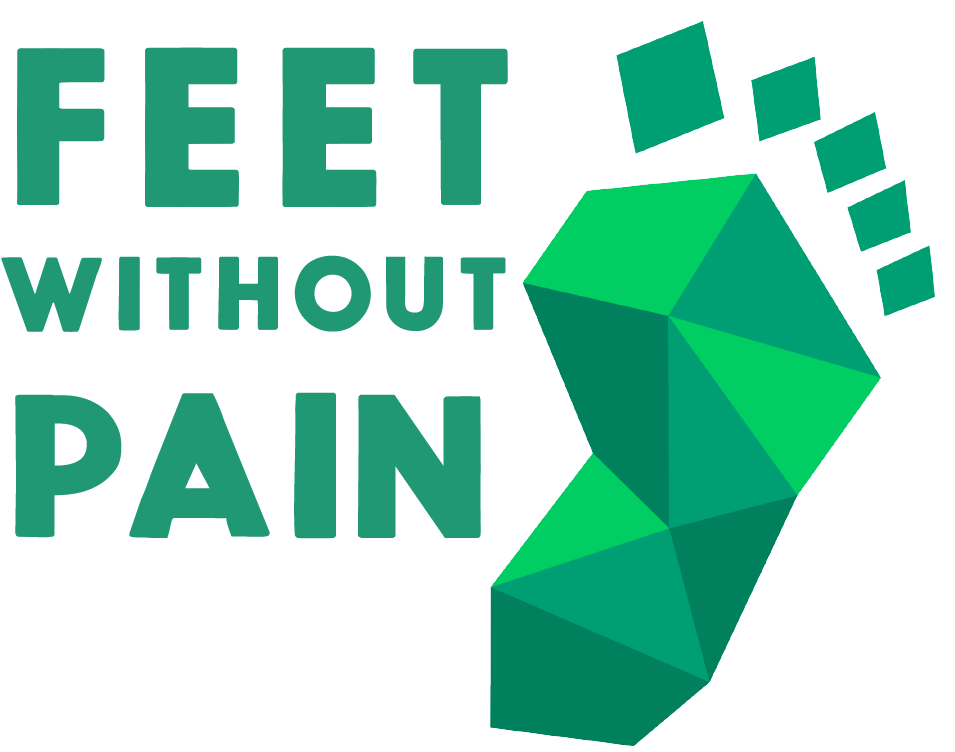Insoles for Children
Children are constantly growing and developing. They can adapt very well to environmental stimuli and learn quickly as their bodies change.
Knowing this, it is crucial to be aware and take care of your children’s development. Always encouraging them with the right stimuli during their growth favors healthy development.
During childhood and adolescence, it is possible for foot abnormalities to develop. Feet Without Pain custom-made insoles are an excellent way to alleviate pain and discomfort associated with many common conditions by aligning the feet and footsteps.
Children’s foot development
A child’s foot grows in length very quickly. Girls’ feet are known to grow up to the age of 12, and boys’ feet up to the age of 15. In fact, girls’ feet grow at a rate of about 2 mm per month, twice as fast as boys’ feet up to the age of 5 years. When they get older, this trend is reversed, and the value decreases. By the age of 12, a girl’s feet have reached their maximum size, while a boy’s feet grows less than 1 mm per month until they are 15.
Purchasing and ensuring suitable footwear for their growth should be a priority as a child’s foot develops. One factor is to avoid hurting their feet with tight shoes. It is of extreme importance to know a child’s correct shoe size. Unfortunately, studies in Europe show that 50% of children wear tighter shoes than ideal. In addition to causing foot pain, this habit can predispose them to the onset of bunions.
A device called Plus 12, developed in Europe, adds 12 mm to the size of the child’s foot, ensuring that the ideal shoe has the exact size of the child’s foot and 12 mm more. The device measures children’s feet and helps solve the shoe size problem mainly because children do not know when the shoe is the ideal size.
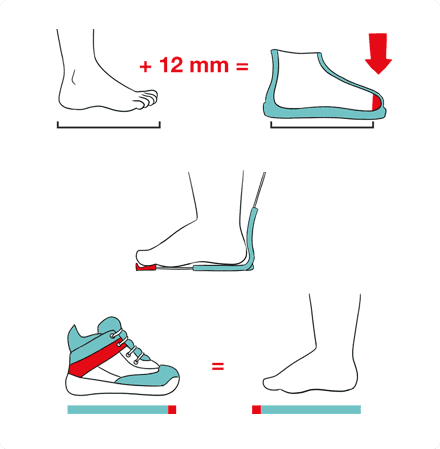
Demonstration of the Plus 12 use.
Children’s Flat Feet
Undeveloped medial longitudinal arch.
During childhood, the medial longitudinal arch develops and protects our feet in adult life. This factor is critical since the arch provides our foot structure and helps us to walk, jump, and absorb impacts.
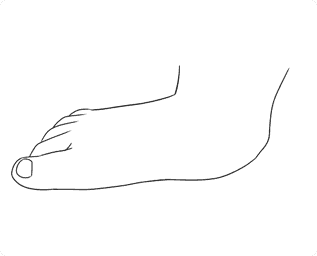
Undeveloped medial longitudinal arch.
A child’s foot arch development peaks between 4 and 6 years old. Later, to a lesser extent, the arch continues to develop until the age of 12. After that, the arch no longer changes.
How to identify children’s flat feet
It can be easy to notice that the arch is not forming in some children. This can be done by observing the child’s foot when they are standing on the ground. The arch decreases or disappears completely when a child with flat feet stands and reappears when they sit or walk on tiptoe. As a result, these children may change how they walk and feel pain, tenderness, or cramping on the bottom of their foot, calf, ankle, or another foot-related area.
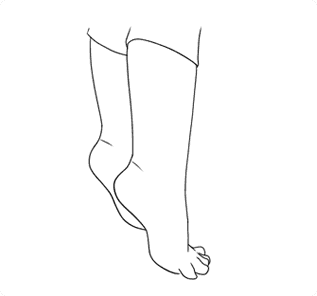
Tiptoe standing test in a child.
Risks of children’s flat feet
Knowing the child’s foot type is essential because when the plantar arch does not develop, it can become an adult with flat feet. It is not necessarily a problem; however, many complaints in adolescence and adulthood relate to feet without arches (flat feet). For this reason, it is essential to take preventive measures to avoid flat feet since they can cause:
- Difficulty finding shoes that fit comfortably
- Knee pain;
- Bunion;
- Tired feet at the end of the day;
- Difficulties in practicing sports requiring intense mobility;
- Problems in walking long distances;
- Quick shoe wearing down.
How to treat children’s flat feet
When a child has been identified or is suspected of having flat feet, they must undergo an evaluation to see if there is any risk or if any intervention is necessary.
Continuously using orthopedic insoles is one of the most effective and straightforward options to solve children’s problems with flat feet. Insoles have arch support, and consistent use during the child’s development significantly helps arch formation.
Ideally, the insole should be used from age four (when the arch begins to form). Although, it is possible to do it anytime up to age 12 to stimulate plantar arch formation. From this age, the arch will hardly change its conformation. Therefore, between four and twelve years old, it is essential to monitor arch development, stimulate the child’s muscles with exercise, sports, walking barefoot, and using an insole if necessary.
Insoles and shoes must be changed periodically according to the child’s growth. The growth rate varies with age and should also be considered in an evaluation.
Children with “Pigeon toes”
Another change commonly seen in children in early developmental stages is the so-called pigeon toes. This condition occurs when the child has the metatarsals (foot bones) turned in or has an internal rotation of the tibia or femur.
Children with this feet and leg trait tend to fall more frequently when running. In these cases, the change is already noticeable in the first year and usually disappears over time. However, if it doesn’t go away by age 10, surgery is sometimes needed to fix the problem.
Therefore, it is important to closely monitor the child’s growth to correct this pathology sooner, encourage them with exercises (ballet is usually a great stimulus), and have them evaluated if the problem does not subside.
Using orthoses and insoles is an effective and simple way to help resolve pigeon toes by aligning the foot and leg as quickly as possible, thus avoiding the need for corrective surgery.
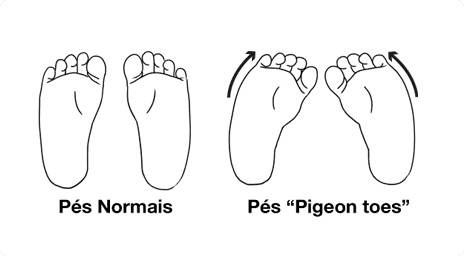
Feet Without Pain Insoles
Feet Without Pain custom insoles for children help to align the foot and the footstep. In addition, an internal lift in the metatarsal region and firm arch support causes the foot to turn slightly outward, correcting the problems of flat feet and pigeon toes.
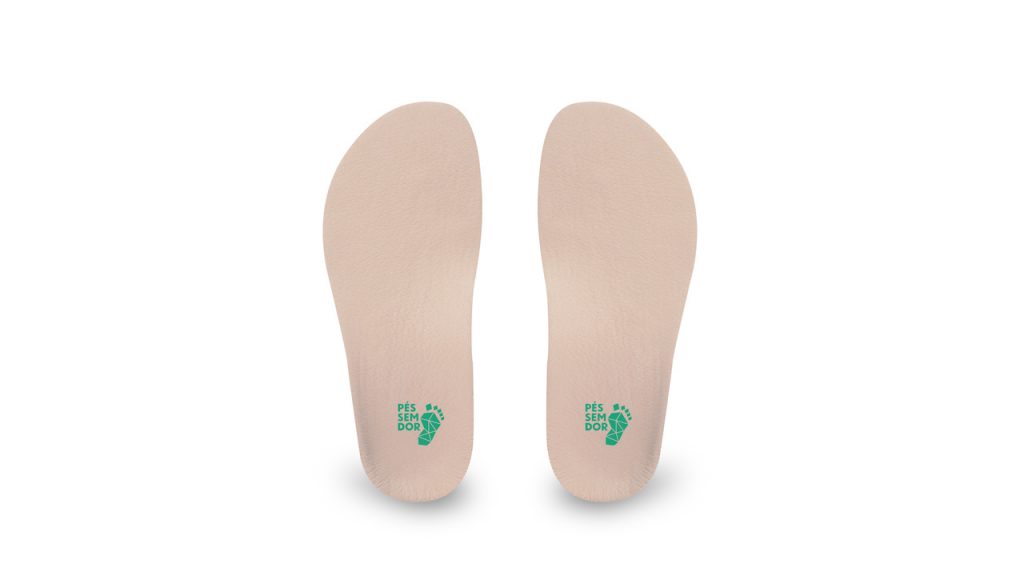
Feet Without Pain insoles for children.
Children who walk on tiptoes
One change affecting children’s feet, explicitly referring to their way of walking, is walking on tiptoes. In the first year of a child’s development, he or she may start walking only on their toes. This tendency is caused by a reflex and motor pattern (controlled by our central system), which should stop after the first five years. If this does not happen, it indicates that the child may have delayed motor development or some significant shortening of the calf muscle and tendon.
Normally muscles should progressively allow the child to rest the entire foot on the ground while learning how to walk, run and perform activities easily. If this does not occur until age five, effective surgical intervention may be necessary if the cause is shortened tendons.
In most cases, the child naturally corrects his gait. However, we recommend seeking professional help to assess the child’s feet and stance if it persists during the first years.
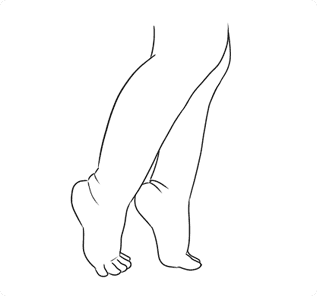
Walking on the tiptoes
Sever’s disease (heel pain in children)
Sever’s disease is another frequent pathology in children between 8 and 14 years old. It causes severe heel pain. It develops when muscles and tendons cannot keep up with the rapid growth of the heel bone. Consequently, the heel area gets inflamed and causes pain due to significant stress and impact in this region during physical activities and games, such as running and jumping.
If a child is experiencing heel pain in this age group, a specialist should be consulted for assessment and a proper diagnosis.
In Sever’s disease, it is recommended to reduce the child’s activity level, rest, and, if necessary, use anti-inflammatory drugs when prescribed by a doctor.
In addition, the use of custom-made orthopedic insoles is highly recommended. The insoles redistribute the pressure on the sole (removing the load from the heel) and correct cases of flat feet and hyper pronation, with deficient shock absorption and the consequent onset of the disease.
From child to teenager
Although much is said about the first years of a child’s development, the following years are also relevant and should not be forgotten. Adolescence is the stage when puberty arrives, and growth speeds up. Teens’ bodies undergo physiological changes. At this stage, paying attention to the feet is critical.
Physical exercise is normal in schools and clubs in adolescence. Thus daily and training routines become more hectic. This increased activity, coupled with growth spurts, strains a teen’s body. They can often begin to experience pain and develop bone and tendon problems.
The most common problem among these adolescents occurs in the knee. Accelerated growth predisposes the body to misalign the joints and spine, which, associated with a significant increase in their activity, leads to pain in the knee joint. Some common problems may occur, such as:
- Patellofemoral chondromalacia (degeneration of the patellar joint with the femur);
- Patellofemoral syndrome (pain in the joint of the kneecap with the femur);
- Tendinopathy (inflammation or pain in the tendon, mainly patellar);
- Non-specific pain (linked to increased physical activity).
All these issues can be related to or resolved by aligning and adjusting the pressure distribution on the foot using Feet Without Pain’s custom-made insoles. Our insoles help support the whole body weight, optimum shock absorption, load reception, comfort, and pain resolution by aligning and redistributing plantar pressure.
Schedule a free evaluation with a physical therapist at Feet Without Pain and learn more about children and adolescent feet and how to care for them. You can prevent future problems and resolve pain easily with Feet Without Pain custom-made insoles.
